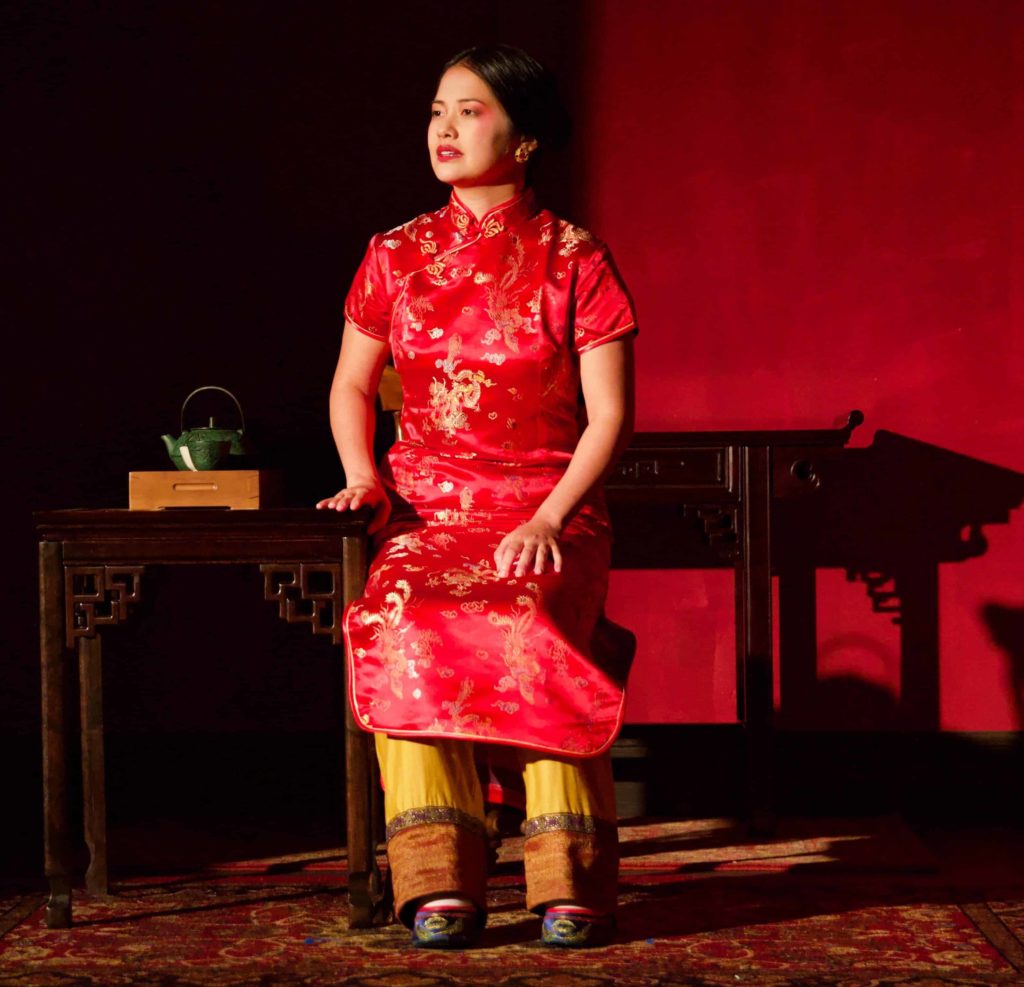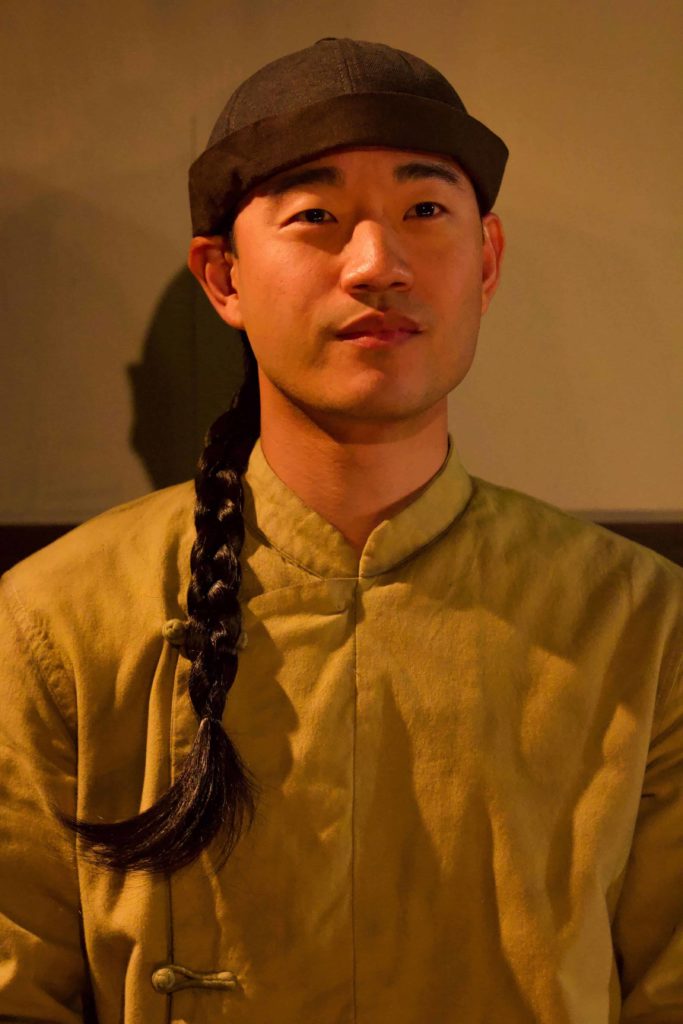On Broadway, a young woman sits in a small room. At 3 and 7:30 p.m., twice a week, she will drink tea, walk in a circle and eat rice with chopsticks. She may sing a song from home and remember the quick and fluid music of strings and wooden flute and percussion.
People, white people, pay 25 cents each (10 cents for children) to watch. She does not know what they are thinking, or what they are saying. She does not know their language, and they do not know hers. She is 14.
She is Afong Moy, the first woman to come from China to the U.S., and she is the center of Lloyd Suh’s world premiere play The Chinese Lady, at Barrington Stage Company and co-presented with the Ma-Yi Theater Company.


Afong came to New York in 1834. Her father sold her for two years of service to Nathaniel and Frederick Carne, traders in Chinese porcelain and furniture, who brought her to perform at Peale’s Museum to sell their goods. Records of her exist now mostly in newspaper cuttings advertising her shows.
“It’s devastating to learn the actual history, or lack of it, of this woman,” said Daniel K. Isaac, who performs as her translator, Atung.
He finds it powerful to tell a part of history that has been erased, not given space — a challenge, an honor, a burden and a joy.
Afong too is honored to perform in the beginning, said actor Shannon Tyo.
“She is excited to see the world, to see American culture. It’s like going to the moon … if Elon Musk colonizes Mars, do you want to be the first to go? Hell yeah I do.”
Afong will travel to major U.S. cities. She is as excited as Tyo would be to see Guangzhou, where Afong might have seen Yushan mountain, the pineapple temple in the sunlight, Zhenhai tower and monks returning to Jingai.
So Afong hopes to explore this country and share her own. And here she knows only one person who speaks her language. Atung, her translator, teaches her English and brings her props for her performances. She is a teenager and the star of her own show, and he is working-class, Tyo says, and she responds to him at first with the sublime indifference of an intern with ear buds.
He is also alone. In the 1830s, many Chinese men came to the United States to work on the railroads, in the mills and in the mines. Young men came from Guangzhou Province to get out of the rice fields, to earn enough to come home, buy land and marry.
Atung has faced hardships, often based on his skin color, Isaac said, and he hopes to shield Afong. He holds humor as he balances the world against her innocent perspective.
When they meet, she may rarely have left her father’s house until he sold her and she walked onto a ship for New York harbor. At the museum she walks slowly to show her feet. They are bound, four inches long, and she is as proud of them as a girl in a corset who can measure her waist with her hands — as a girl in high heels and skinny jeans.
And she was the first to come here, said director Ralph Peña, partly because in the 1800s Chinese woman could not get through customs here unless they could prove they had never been prostitutes — something impossible to prove, and so brutally humiliating that few would try.
Chinese men rarely earned enough to bring and support their wives here, so their families lived in China and waited for them. And any woman here who married a Chinese man would lose her citizenship.
So Atung, Afong’s boss, her co-worker and in time her friend, has been alone for many years, because it is illegal for him to be anything else.
“Lloyd tackled so many pieces of history,” Isaac said, “known and unknown, with a poetic touch.”
In 1834, when Afong steps onto Broadway, the slave trade is active. The Cherokee have been forced into Oklahoma. As she performs across 30 years and more, she will see the transcontinental railroad, the Gold Rush and the Civil War.
And she will see years of aggression against her people, until in 1882 President Arthur will sign the Chinese Exclusion Act, preventing Chinese people from coming to the U.S. for more than 60 years. The act was not repealed until 1943, and in the years after it passed, European Americans lynched and massacred Chinese people across the west and Southwest and in San Fransisco.
“There are kids today who don’t know about the act,” Tyo said.
“There are kids who don’t know about Japanese internment” in World War II, Isaac said.
Peña agreed bluntly, “there are people who still think we won Viet Nam. Because the victors write history — because the U.S. writes history — it writes out pejorative events that might say the U.S. is not what it is.”
Afong explains what she sees. The U.S. is a place where thousands of people come to a museum to see a girl from Guangzhou eat rice — and they feel superior.
The few records of her life are all from the perspective of the people who paid their 25 cents to see her. She left no letters, no diaries, no music or poetry, reveries or memories. But now she and Atung are standing on stage again and holding the audience’s eyes. And she can speak.

